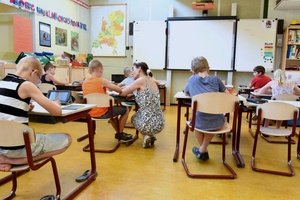The teaching guides cover ‘priority’ topics including explict teaching, explaining learning objectives, rules and routines, monitoring progress and supporting self-regulated learning, with more topics set to be covered over the course of this year.
Informed by the research base in cognitive science, neuroscience and educational psychology, the freely-available resources highlight the positive impact that comes when teachers’ practice supports how the brain functions during the learning process.
AERO CEO Dr Jenny Donovan indicated the guides, which form part of AERO’s Teaching for How Students Learn model, meet a need expressed by teachers and can boost the learning experience for all.
“The evidence is clear on how students learn, and this has implications for how teachers can best teach to ensure learning success,” Donovan said.
“By incorporating the evidence-based practices outlined in these guides, teachers and educators can support students to become engaged lifelong learners.”
The release comes on the heels of Melbourne Archdiocese Catholic Schools’ (MACS) huge shift to the science of learning – the latest school system to announce that explicit teaching informed by cognitive science will be at the foundation of all teachers’ practice.
This move follows in the footsteps of Catholic Education Canberra and Goulburn, who in 2020 overhauled teachers’ instruction to align with the science of learning across its 56 schools.
A study released last week by The Centre for Independent Studies found there was a ‘science of learning lottery’ at play across the country, with research fellow Trisha Jha warning too many Australian teachers stumble upon the science of learning by chance, only to face contradictory advice from education departments and a lack of system-wide support.
Donovan said there had been “huge interest” from teachers and school leaders in AERO’s Teaching For How Students Learn model.
“We know teachers are interested in how to best align their practices with this evidence, and we’re excited to see these guides out in the world,” she added.
The new guides cover:
- Monitoring progress: underscores the importance of regular checks for understanding in facilitating effective instruction and formative assessment. This practice not only assesses students’ knowledge but also targets teaching to the level of guidance and support the student needs, fostering an environment where active participation is encouraged and a positive learning experience is cultivated.
- Explain learning objectives: explores how lesson goals can create a shared understanding between educators and students. Activating prior knowledge and connecting to objectives for the lesson can boost confidence and enhance students’ ability to expand and apply their growing knowledge and skills.
- Rules and routines: highlights the critical role of clear guidelines in establishing effective learning environments. Clear guidelines set expectations, enhance active participation and provide predictability, fostering positive relationships and learning success. By mitigating cognitive load and promoting cultural inclusivity, rules and routines are essential for shaping an environment in which all students belong and succeed.
- Teach explicitly: emphasises the importance of structured and sequenced teaching in breaking down complex content for effective comprehension. By providing explicit guidance, teachers and educators can help students build on existing knowledge, fostering effective information retention, understanding and application.
- Supporting self-regulated learning: explains fostering reflection, goal setting and supporting students to progressively develop the skills to improve their own approach to learning. This practice equips students not only for success in school but also for lifelong learning and achievement.
For more information on the practice guides and resources, click here.














